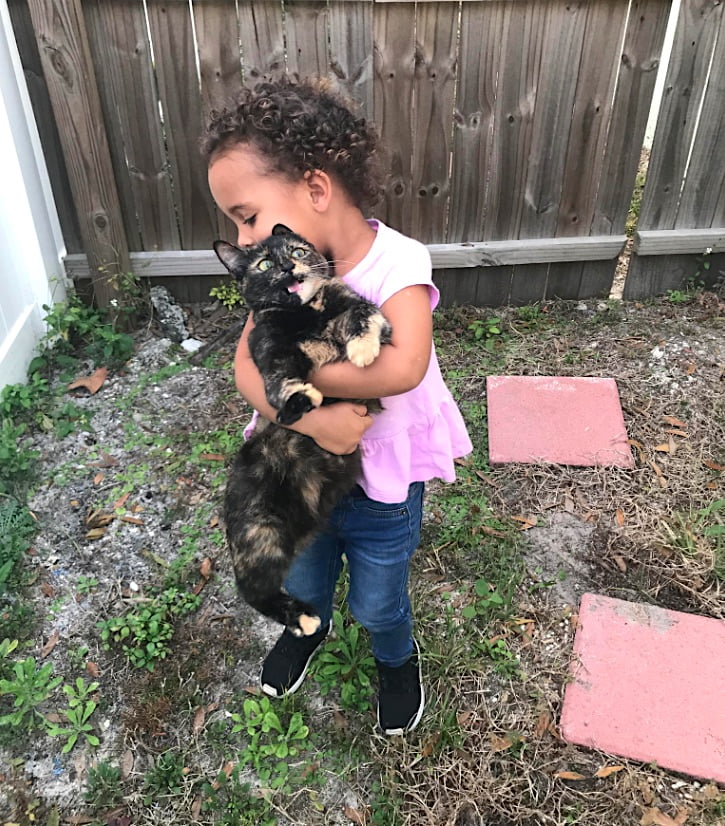There are two major aspects to children interacting with domestic cats which have a bearing upon the safety of the child. The first is whether the child has been trained to interact with a domestic cat properly and the second is the character and socialisation of the cat.
It’s been said many times, so I won’t go over this, but children need to be instructed on how to interact with domestic cats before they are allowed to do so. There are too many cats being relinquished to cat shelters because a child was scratched or bitten. Invariably this unfortunate consequence of interacting with the family cat is nearly always because of inappropriate handling by the child.

But some cats are better for children than others. And it cuts across the random bred and purebred cat population. Admittedly, some purebred cats are probably more laid-back than others such as the well-known Ragdoll and perhaps the Persian (although Persians are said to be nervous). The American shorthair is a cat I would recommend too, as one suitable for interacting with children.
And arguably coat colour and type might play a part here if you believe that coat type is linked to a cat’s personality. Male ginger tabbies probably have more solid characters than female tortoiseshell cats who tend to have ‘catitude’. That’s anecdotal evidence but I have seen this quite a lot.

NOTE: THERE ARE SOME MORE ARTICLES ON KIDS AND CATS AT THE BASE OF THE PAGE.
But the most important factor in selecting a cat who will interact with children in the best possible way is one that is socialised fully to children, adult people, other animals and so on. If you add excellent socialisation to a cat with an innate character that is confident and imperturbable you minimise the chance of a child being scratched or bitten during play sessions.
The only way you can select such a cat is to familiarise yourself with the cat’s behaviour and character before adoption. It occurs to me, too, that it would be useful to allow the family’s child to be involved in the adoption process by interacting with the cat to be adopted.
Sometimes, cats form almost immediate bonds with people or they demonstrate that they are attracted to a person. Perhaps it is their scent which attracts them. But they move towards the person and want interact with them. If this happens to a child it would encourage me as a parent to adopt that cat.

Perhaps it is fair to say that the weak link in a family in terms of where problems can occur in interacting with domestic cats is the children of the family. They’re the ones who are most likely to go wrong because they can be a bit impetuous and silly. They can forget what they’ve been told about how to handle the cat and are unaware of the consequences of their behavior.
If the family cat has a close relationship with the child they’re going to be less likely to behave fearfully towards the person. Fearfulness is more likely to lead to the odd slap or bite when the animal is inappropriately provoked for whatever reason.
There is a another aspect to this. Cats build up their energy over the day and there needs to be an outlet for it. If play takes place at a time when a cat is in a mood to hunt it may be quite easy to overstimulate him. Overstimulation to petting can lead to biting because the cat perceives the petting as play. We know that play is play-hunting for a cat so it a logical extension to bite. You can’t blame the cat for that.

So timing when to play with a cat can be a factor. If a cat has had a chance to release energy than arguably they are less likely to respond to inappropriate handling in a negative way (from the person’s perspective).
The bottom line is to select an imperturbable cat and to handle him/her with respect (as a cat not a little human). Parents should have some knowledge of cat behavior before adopting.
SOME MORE ON KIDS AND CATS

